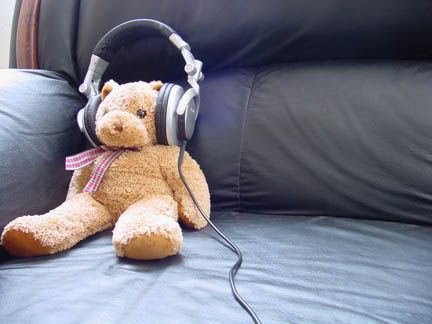Favela Funk, Caserio Reggae

Playero- Baby Rasta & Gringo
Bola De Fogo E As Foguentas-Atoladinha (Enterradinha)
After spending the last three weeks in Rio de Janeiro, it would be poor manners if I didn't drop one of these. This post is dedicated to those tasty beats home brewed in the rough tropical slums of Brazil and Puerto Rico.
Baile Funk is a type of Brazilian music that can be found in Brazil's Favelas, the "super slums" that can be seen in most of Rio's hillsides. The music reflects the culture and way of life of some of the people who live in Favelas-it's rough, gritty, and mostly talks about gang life, drug life, or women. The production is mostly composed of whatever sound bites, samples, or loops the producers can get a hold of-much like the way most of the buildings and houses in the Favelas are constructed. While some may find this stuff too loud or, if you understand Portuguese, too offensive, the reality of life in Rio and in most of Brazil is that Favelas do exist and life in the Favelas is rough.
A couple miles north and east of Rio, in the Caribbean, a similar movement started about 14 years ago in the Caserio slums of Puerto Rico. The world knows it now as Daddy Yankee's music, or Reggaeton. But back then it was a local phenomenon: raw, gritty, and grimy. Partly inspired by Reggae, partly by rap, and purely improvisational and creative genius, Reggaeton belonged to two crews when it first hit the scene: Playero and Da Noise. They could be compared to the Wu Tang Clan of Puerto Rico. These crews boasted 20+ rappers and the best producers. They would praise their Caserio, sing about how the police were corrupt, diss on other crews, or just flat out degrade women. Most people hated it, those of us who liked it would blast it loud from our cars or from our radios-much to the dismay of neighbours and families. Fast forward to 2001 and a much more watered-down version can be heard in clubs all over the world on the lips of everyone shaking their booty: "Da me mas gasolina!"
Personally, I think this music has an important place in the cultures that they come from. I couldn't listen to it all day every day, but for me it's pretty interesting on several levels. First, both Reggaeton and Baile Funk got their start much in the same way as Hip Hop. Granted, when Hip-Hop first made its mark it wasn't violent or aggressive, that came later with gangsta rap. But, it was an expression of a part of society that had been marginalized for a long time. It was a voice for people who weren't being heard. That is exactly what Baile Funk and Reggaeton do for the Favela and Caserio respectively. These styles give a voice to a huge part of Brazilian and Puerto Rican society that is literally on the periphery of everyday life. Second, it's amazing what these producers do with minimal resources. They put together intense and multilayered beats, and while some may say that the beats are redundant and basic-no one can deny the effect the beats start o have on your legs and your booty.
So I'm going to post up these two tropical booty-shaking styles side by side. They come from different places, but they share many similarities. Hate it, Love it, or leave it alone --at least give it a try. If you like what you hear-check out Mr. Phipson, the Baile Funk Booty Beat connoisseur at www.mrphipson.de. He's always got fresh mixes and always keeps it funky.



<< Home